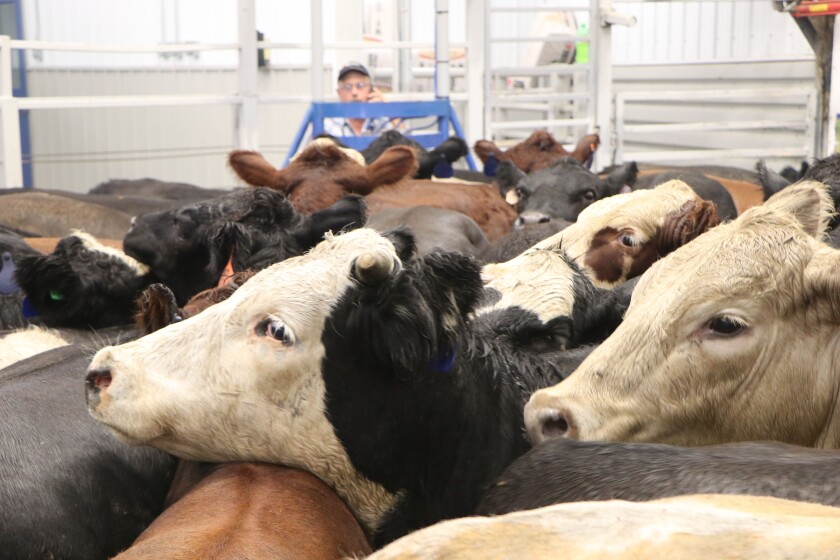Elevate Your Knowledge with Bagley Risk Management
Elevate Your Knowledge with Bagley Risk Management
Blog Article
Understanding Animals Risk Defense (LRP) Insurance Policy: A Comprehensive Guide
Navigating the world of animals threat defense (LRP) insurance can be a complex endeavor for lots of in the farming market. From exactly how LRP insurance coverage operates to the various protection options readily available, there is much to discover in this extensive overview that can possibly form the way animals manufacturers come close to danger monitoring in their services.

Just How LRP Insurance Coverage Functions
Periodically, comprehending the technicians of Livestock Danger Defense (LRP) insurance policy can be complicated, however breaking down just how it works can supply clearness for farmers and breeders. LRP insurance coverage is a risk administration device made to shield livestock producers against unexpected cost decreases. It's important to keep in mind that LRP insurance coverage is not an earnings guarantee; instead, it concentrates only on rate danger defense.
Qualification and Insurance Coverage Options
When it comes to coverage options, LRP insurance policy provides manufacturers the flexibility to select the insurance coverage level, protection period, and endorsements that finest match their danger administration demands. By understanding the eligibility standards and coverage options available, livestock manufacturers can make educated choices to handle danger efficiently.
Benefits And Drawbacks of LRP Insurance Policy
When examining Animals Risk Protection (LRP) insurance, it is important for animals manufacturers to consider the advantages and drawbacks fundamental in this risk monitoring device.

Among the key benefits of LRP insurance coverage is its ability to give protection versus a decrease in animals costs. This can help protect producers from economic losses arising from market fluctuations. In addition, LRP insurance policy provides a level of adaptability, allowing manufacturers to customize insurance coverage degrees and policy periods to suit their details needs. By securing an ensured cost for their livestock, producers can much better take care of threat and prepare for the future.
Nonetheless, there are additionally some downsides to consider. One limitation of LRP insurance is that it does not safeguard against all types of threats, such as condition episodes or natural catastrophes. Costs can occasionally be expensive, particularly for producers with large animals herds. It is important for manufacturers to very carefully examine their specific risk direct exposure and financial circumstance to figure out if LRP insurance policy is the appropriate threat monitoring tool for their operation.
Recognizing LRP Insurance Premiums

Tips for Making The Most Of LRP Conveniences
Optimizing the advantages of Animals Threat Protection (LRP) insurance calls for tactical preparation and proactive danger administration - Bagley Risk Management. To maximize your LRP insurance coverage, think about the following tips:
On A Regular Basis Examine Market Problems: Remain educated regarding market patterns and rate changes in the animals sector. By keeping track of these factors, you can make informed choices about when to acquire LRP coverage to safeguard versus potential losses.
Establish Realistic Coverage Levels: When picking coverage levels, consider your manufacturing expenses, market price of livestock, and possible risks - Bagley Risk Management. Setting realistic insurance coverage degrees makes sure that you are properly protected without overpaying for unnecessary insurance
Expand Your Coverage: Rather of depending exclusively on LRP that site insurance, think about diversifying your threat management techniques. Integrating LRP with various other danger administration tools such as futures contracts or choices can supply detailed coverage versus market uncertainties.
Evaluation and Readjust Insurance Coverage Regularly: As market conditions change, occasionally assess your LRP protection to guarantee it aligns with your existing threat exposure. Adjusting insurance coverage levels and timing of acquisitions can aid enhance your danger security technique. By following these ideas, you can make the most of the advantages of LRP insurance and protect your animals operation versus unforeseen dangers.
Verdict
In conclusion, animals danger protection (LRP) insurance coverage is a useful tool for farmers to manage the financial risks related to their livestock operations. By recognizing how LRP works, qualification and insurance coverage alternatives, in addition to the pros and cons of this insurance coverage, farmers can make educated choices to shield their livelihoods. By very carefully considering LRP premiums and implementing approaches to take full advantage of benefits, farmers can mitigate prospective losses and make sure the sustainability of their procedures.
Animals manufacturers interested in getting Livestock Risk Defense (LRP) insurance can check out an array of qualification criteria and insurance coverage choices tailored to their details livestock procedures.When it comes to insurance coverage options, LRP insurance policy uses manufacturers the flexibility to select the protection degree, protection duration, and recommendations that finest match their threat monitoring needs.To comprehend the ins and outs of Animals Danger Protection (LRP) insurance coverage totally, recognizing the elements influencing LRP insurance policy costs is important. LRP insurance coverage costs are identified by numerous aspects, consisting of the coverage level selected, the anticipated cost of animals at the end of the insurance coverage period, the kind of animals being insured, and the length of the protection duration.Evaluation and Readjust Protection Regularly: As market problems change, occasionally evaluate your LRP insurance coverage to guarantee it lines up with your present threat exposure.
Report this page